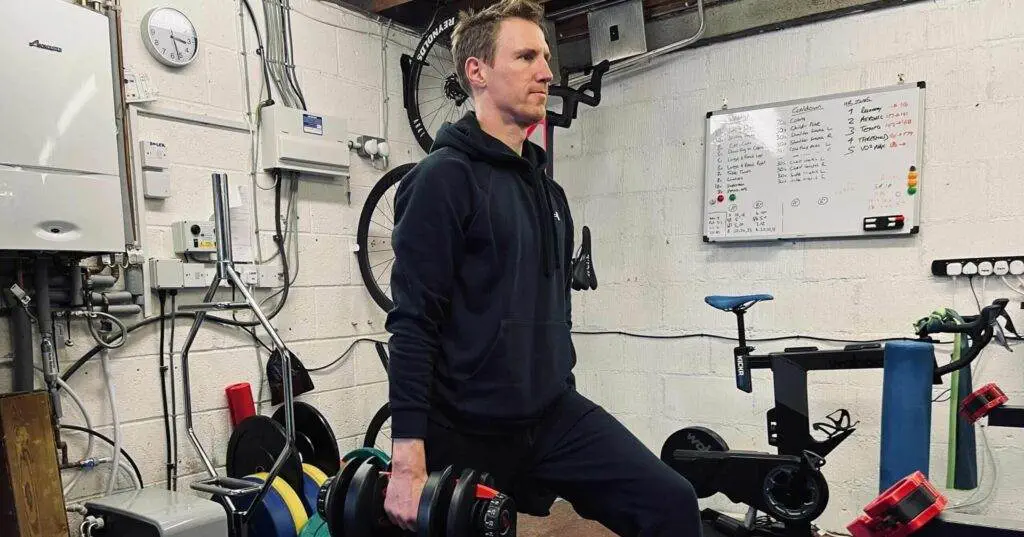The weight room can feel like a jungle of intimidating equipment.
You walk in and see people lifting heavy weights, grunting, and you wonder, “Where are the instruction manuals for these machines?”
But don’t worry—figuring out how to start strength training is a journey worth embarking on.
Modern exercise science has laid out the many benefits of strength training: stronger bones, reduced inflammation, lower risks of cancer and cardiovascular disease, improved sleep, better mental health, and sharper cognitive function.
And let’s not forget, stronger muscles. Exercise physiologist Alyssa Olenick points out that muscle tissue starts to dwindle as early as our 30s if we don’t work to maintain it.
That’s why current federal guidelines recommend adults engage in muscle-strengthening activities for all major muscle groups two days a week, in addition to cardio.
Getting started is easier than you think. You don’t need a personal trainer to dive into strength training.
Kristie Larson, a New York-based personal trainer, assures beginners that many of the basic moves you learned in primary school PE lessons can form the foundation of an effective routine.

The Best Exercises to Start With
So, what exactly is strength training? According to Olenick, it’s any exercise that puts your tissues under load to increase strength or muscle tissue over time. This can include bodyweight exercises like planks, or working with resistance bands, dumbbells, kettlebells, barbells, or resistance machines.
Start with exercises that mimic everyday activities. Think squatting to a bench, similar to sitting in a chair, or lunges, which mimic getting up from the ground using one leg. These moves benefit your life directly.
To target all major muscle groups, focus on four foundational movement patterns: pushing (push-ups or bench presses), pulling (rows or biceps curls), squatting (lunges, leg presses, or squats), and hinging (deadlifts). Olenick suggests incorporating one of these movements into each workout session to ensure a balanced routine.
Read More: Why Walking Isn’t Enough When It Comes to Exercise
Don’t forget to add some core work. Larson recommends moves like planks, bear holds, weighted marches, and heavy carries. If barbells feel too intimidating, start with dumbbells, resistance bands, or just your body weight. Olenick advises getting comfortable with new movement patterns before progressing.
If you’re unsure about creating a well-rounded programme, structured beginner workout plans are available online. Larson offers free simple guides to get you started. Avoid plans with unrealistic promises. Look for scalable and modifiable routines that can be personalised. Each exercise should include a suggested range of reps, sets, and rest intervals.
Expect to feel stronger quickly. The first six to eight weeks of resistance training bring neuromuscular adaptations, meaning your nervous system gets better at recruiting and contracting muscle fibres. This phenomenon is often referred to as “newbie gains.”
How to Pick the Right Weight
Choosing the right weight can be tricky. Larson suggests beginners aim for 10 to 15 repetitions without a break. If you can easily do more than 10 reps, the weight is too light. If you’re struggling to complete 10 reps, it’s too heavy. Avoid advanced techniques like “training to failure” seen on social media.
Olenick recommends choosing weights based on perceived exertion. On a scale of one to 10, where one feels super easy and 10 feels like the heaviest you can lift, aim for about a six or seven. As you get stronger, gradually increase the weight.
How Much Strength Training to Do
Although federal guidelines recommend two days a week, Larson suggests 30 to 60 minutes per session. For each move, aim for two to three sets of 10 to 20 reps. For weighted exercises, 10 to 15 reps is ideal, and for bodyweight exercises, 15 to 20 reps is best. Take enough rest between sets to allow muscle recovery.
Read More: 8 Ways to Stay Hydrated If You Hate Drinking Water
Keep your workouts manageable. Start with less than you think and build from there. Olenick emphasises making it maintainable for life.
How to Start Strength Training Without Getting Injured
Focus on maintaining a neutral spine—a tall, open-chested posture with your rib cage stacked over the pelvis. Form exists on a spectrum, and it’s okay if it’s not perfect in the beginning. You’re not automatically going to get injured just because your form isn’t perfect.
Most beginners aren’t as novice as they think. Larson points out that we lift heavy things in our daily lives all the time, like carrying grocery bags or opening heavy doors. Many people underestimate what they can lift.
No matter your starting point, you’ll still be building muscle. Keep things manageable and remember, “you can’t mess it up in the beginning,” Olenick says. Everything you do is beneficial.
